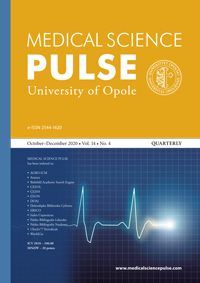Comparative analysis of women aged over 35 after in vitro fertilisation and natural fertilisation: a case control study.
Comparative analysis of women aged over 35 after in vitro fertilisation and natural fertilisation: a case control study.
Author(s): Iwona Kiersnowska, Dorota Sys, Barbara Baranowska, Grażyna Bączek, Piotr WęgrzynSubject(s): Health and medicine and law
Published by: Uniwersytet Opolski
Keywords: maternal age; in vitro fertilisation; gravidity
Summary/Abstract: Background: Postponing motherhood is a worldwide trend. As a woman ages, the ability to get pregnant naturally decreases. The postponement of motherhood is related to the increased availability of assisted reproductive technology, which is associated with a higher incidence of maternal health problems. Aim of the study: To compare the health problems encountered during pregnancy, childbirth and early postpartum, and to examine the health status of the newborn, in women over 35 years of age who received in vitro fertilisation (IVF) or conceived naturally. Material and methods: A retrospective comparative case-control study was carried out based on the analysis of medical records from women who gave birth after 35 years of age. The study was conducted in two hospitals of the third level of reference in Warsaw, Poland. A group of women who gave birth after IVF (n=240) was compared with a control group who gave birth following natural fertilisation (n=240). Results: Women after IVF were statistically more likely to be obese (5% vs 0.2%, p=0.001), to have received infertility treatment (18% vs 1%, p=0.000) before pregnancy, and to experience cholestasis during pregnancy (4% vs. 1%, p=0.019). There was a higher incidence of multiple pregnancies [twins (10% vs 1%, p=0.0001) and triplets (0.5%, p=0.0001)], and deliveries by caesarean section (61% vs 51%, p=0.027) in women from the IVF group. The groups did not differ with respect to preterm delivery, duration of pregnancy, or 1st, 2nd and 3rd periods of labour. Mothers in the IVF group had a statistically longer perinatal hospital stay (7±8 vs 5±4 days, p=0.001). Conclusions: Women over 35 years of age after IVF have a higher rate of caesarean sections and multiple pregnancies. Obesity before pregnancy and cholestasis during pregnancy are also more common in this group. There is no difference between the health status of newborns from mothers after in vitro or natural fertilisation.
Journal: Medical Science Pulse
- Issue Year: 15/2021
- Issue No: 1
- Page Range: 12-18
- Page Count: 7
- Language: English

